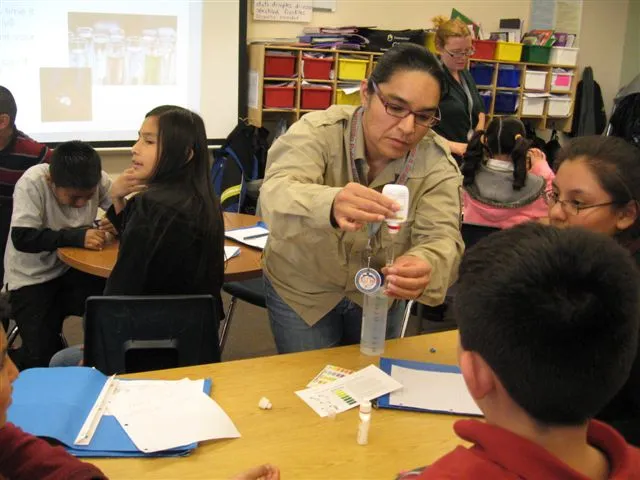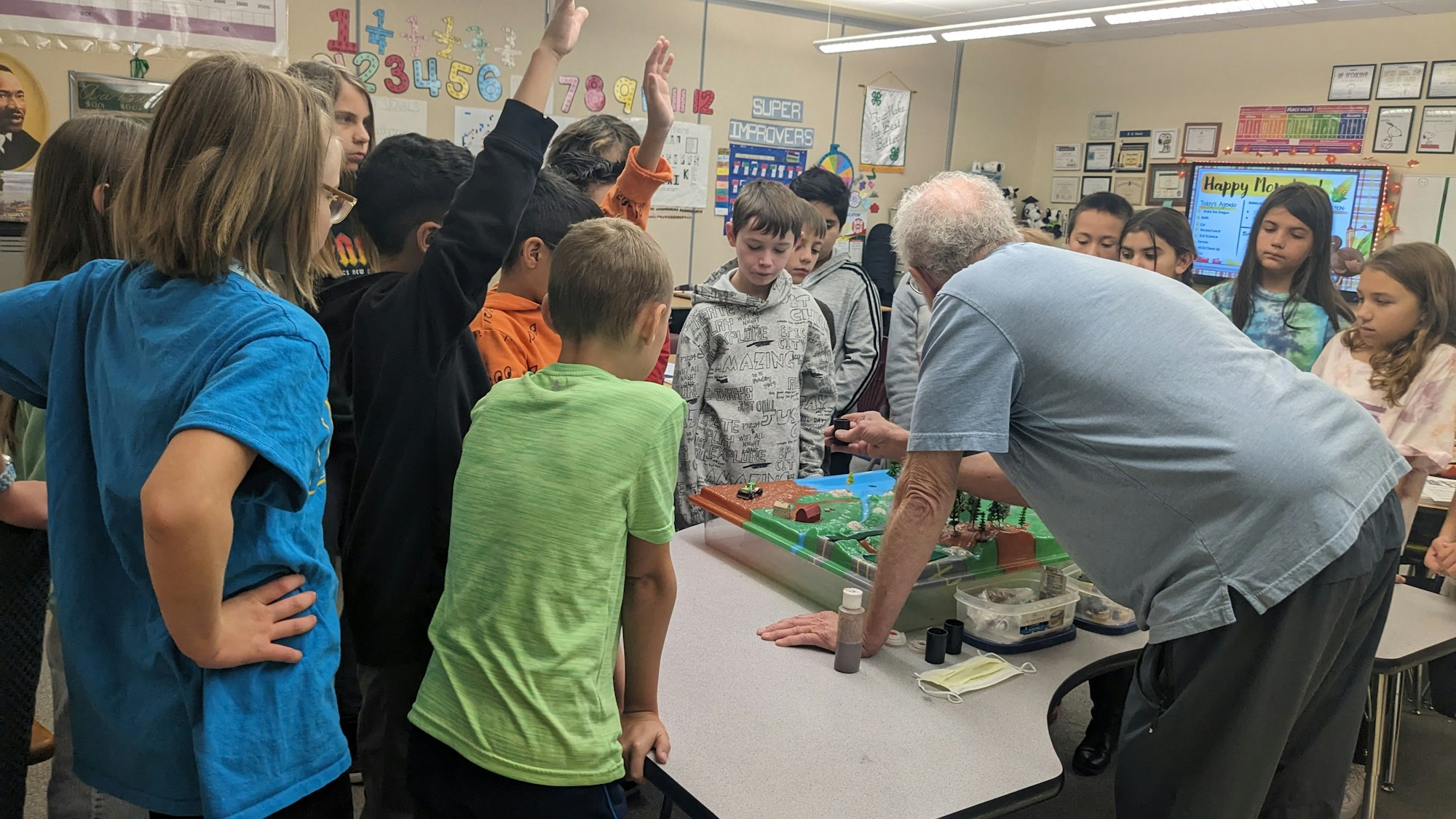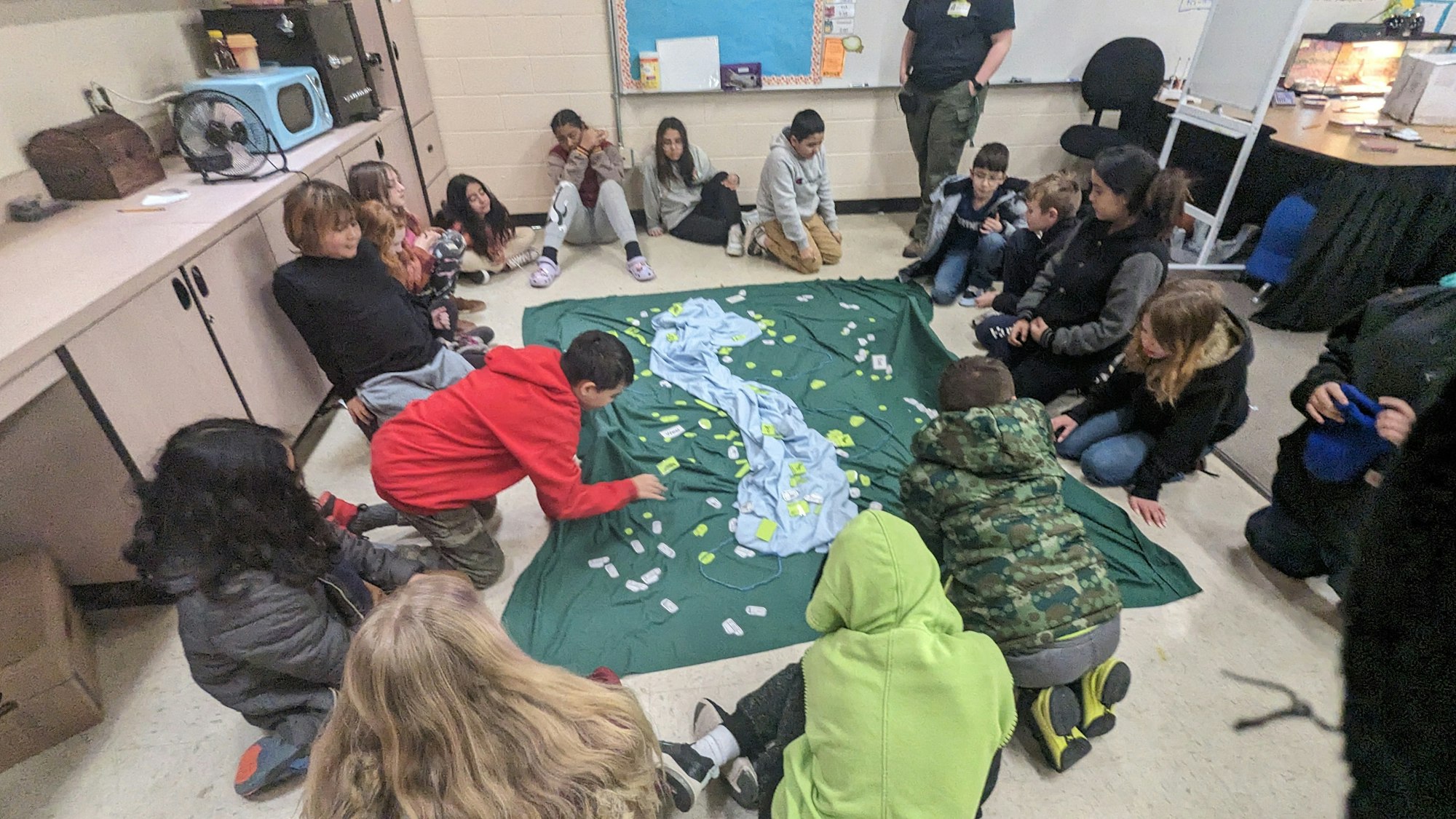Water in Our Society
Water is life. This precious resource is weaved into the very fabric of our society and is used to support its many inhabitants. The Water in Our Society unit builds off of the Understanding a Watershed unit by connecting the concept of a watershed to human use and impact on water resources in our local area. The presentations represent core components of RiverXchange® and are provided by water resource professionals in our community. Using hands on activities, models, and group discussion, presenters demonstrate to students the many ways in which our community relies on water and how we need work together to properly manage water resources for both human and non-human life. Each presentation correlates to Next Generation Science Standards, while also providing students with career modeling in the fields of engineering, science and agriculture.




.JPG?ixlib=rb-1.1.0&w=2000&h=2000&fit=max&or=0&s=b4b04a7dbc273bf354aff8ba9185063d)
.jpg?ixlib=rb-1.1.0&w=2000&h=2000&fit=max&or=0&s=820252b40cbd45224d7555934d852f06)




.JPG?ixlib=rb-1.1.0&w=2000&h=2000&fit=max&or=0&s=b4b04a7dbc273bf354aff8ba9185063d)
.jpg?ixlib=rb-1.1.0&w=2000&h=2000&fit=max&or=0&s=820252b40cbd45224d7555934d852f06)
The Drinking Water Presentation covers drinking water sources (The Rio Grande & Aquifer depending on where students live), amount of freshwater available for drinking water (and other uses) on earth, and includes a hands-on experiment calculating loss of water (in gallons) from leaky faucets from a minute to a year. Students complete the activity with practical steps to conserve drinking water at the personal and community level.
NGSS Standard Correlation
5-ESS2-2. Describe and graph the amounts and percentages of water and fresh water in various reservoirs to provide evidence about the distribution of water on Earth.
5-ESS3-1. Obtain and combine information about ways individual communities use science ideas to protect the Earth’s resources and environment.
The Wastewater presentation demonstrates how wastewater is treated through various stages and what not to put down drains through a model used by students to mimic the treatment process.
NGSS Standard Correlation
5-ESS3-1. Obtain and combine information about ways individual communities use science ideas to protect the Earth’s resources and environment.
5-PS2-1. Support an argument that the gravitational force exerted by Earth on objects is directed down.
The Agriculture Presentation reviews the commercial use of water locally for agriculture and demonstrates how farmers use water conservation strategies to water their crops. In this presentation students use a model to see how flood irrigation, sprinklers and drip irrigation work and compare their usage through the lens of conservation.
NGSS Standards Correlation
5-ESS3-1. Obtain and combine information about ways individual communities use science ideas to protect the Earth’s resources and environment.
The Stormwater presentation uses the Enviroscape Model to define a watershed and demonstrate point-source and non-point source pollution that occurs in urban communities. Student complete the activity with a discussion on how to prevent non-point source pollution in their community.
NGSS Standard Correlation
5-ESS2-1. Develop a model using an example to describe ways the geosphere, biosphere, hydrosphere, and/or atmosphere interact.
5-LS2-1. Develop a model to describe the movement of matter among plants, animals, decomposers, and the environment.
5-ESS3-1. Obtain and combine information about ways individual communities use science ideas to protect the Earth’s resources and environment.
5-PS2-1. Support an argument that the gravitational force exerted by Earth on objects is directed down.
- In what ways does our society use water?
- Where does your community’s drinking water come from?
- What are ways your community uses science to protect and conserve water?
- Where does your community’s wastewater go?
- What actions can all of us take to conserve water?
